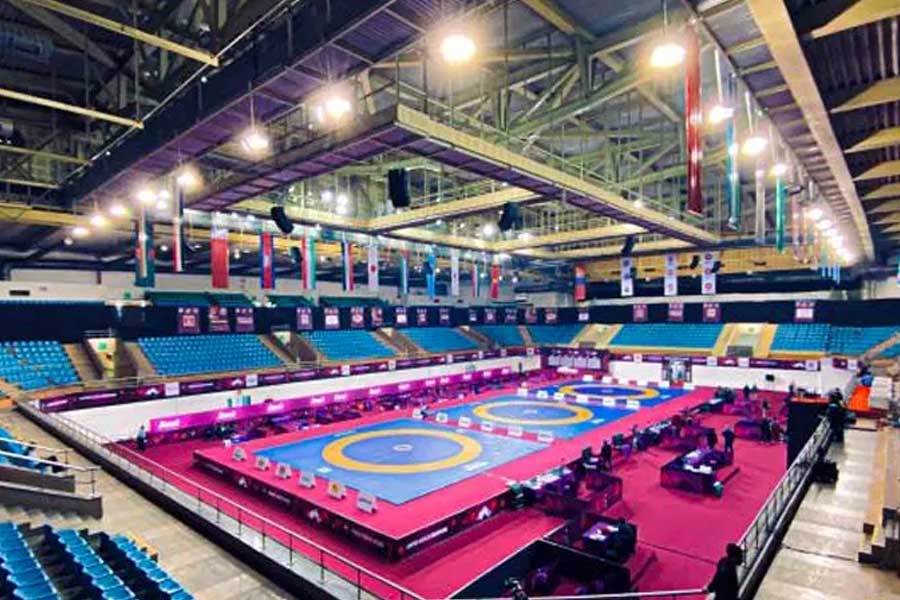The UK operation had been a pain point for Tata Steel ever since it was acquired in 2007. Barring a handful of years, the business has been loss-making and funded from Indian operations. In FY23, UK reported a negative EBIDTA of £127 million and in Q1FY24, £39 million.
The cash-burning requirement for Tata Steel was £163 million in FY23. On Friday, the Rishi Sunak-government offered up to £500 million in grant to the company to replace the loss-making and polluting blast furnace operation in Port Talbot to a less carbon-intensive electric arc furnace, at a capital cost of £1.25 billion. Koushik Chatterjee, executive director and CFO of Tata Steel, tells Sambit Saha of The Telegraph, the proposed transition will help the UK business reboot to a 2.0 version.
What led Tata Steel to seek the support of the UK government?
Decarbonisation as a theme globally aims to reduce carbon emissions by transition to low-carbon processes. Steel is known as a hard-to-abate sector because there is no at-scale technology available to remove the entire carbon from the processes — the best available economical technology today is through the electric arc furnace route with either scrap or direct reduced iron as the raw material for the process
To make the decarbonisation transition just and viable, there are three market participants who have to support the funding transition – obviously the company, the community through the governments and the customer through the different regulatory mechanisms such as the carbon border adjustment mechanism and green premium.
This is currently the trend the world over especially in Europe and the US where the governments are supporting the transition through either target funding or equivalent large-scale incentive mechanism. The UK government’s decision to support Tata Steel UK’s transition is consistent with the above philosophy and in line with the UK’s
own net zero goals.
What are the outcomes Tata Steel wanted to achieve with the discussion with the UK government?
We wanted to ensure that the framework of the discussions addresses a few critical needs. One, we have an outcome that addresses the issue of a robust and viable business in the UK, secured operationally and financially. We have a strong and valued relationship with the customers and we would seek to continue to serve them in the future.
Second, we are keen to ensure the continuity of steelmaking in Port Talbot which has been under threat due to the end of life of the assets.
Third, through the transition, we have to address the issue of decarbonisation as it has become a critical business driver for the future. Fourth a solution that would preserve a significant number of direct employment and promote jobs in the larger industrial ecosystem in the UK, especially South Wales.
With a £500 million grant, will the UK business now be financially viable?
The investment case for the proposed pathway is financially attractive and meets the threshold for our capital allocation. The proposed transition project will actually help our UK business reboot to a 2.0 version. I say this because, fundamentally, from an operating perspective, the problem has always been the legacy heavy end upstream assets, where the cost of steel production of hot-rolled coil was high making the entire operations challenging.
Our value-added downstream operations are deeply entrenched in the UK industrial value chain with marquee customers. We are the largest steel producer in the UK
and have a leading market share in segments such as automotive, construction and packaging.
Hence, by replacing ageing and uncompetitive heavy end assets, with new, green state-of-the-art facilities, the operations will be well positioned to be structurally competitive in the future.
Will Tata Steel have to take a £1.3 billion write-off on account of the proposed restructuring?
I have mentioned in the investor call that the Tata Steel balance sheet will be restructured with the change in the underlying circumstances in the UK. This will involve impairing on a non-cash basis, the legacy investment in Tata Steel UK after being appropriately assessed under the accounting standards.
This non-cash assessment will be on the standalone financials for the past investments in the UK and on the consolidated financials for the legacy end-of-life asset-related impairment of the site and other associated costs of restructuring. We will appropriately disclose the details of the restructuring and the accounting treatment in the near future.
How do you plan to win over the unions who are protesting at least 3,000 job cuts?
Firstly, we have already mentioned that we will undertake meaningful consultation with the unions regarding the transition and the way forward. Secondly, we have always worked transparently and diligently with the unions and other stakeholders in past consultations over the years to ensure a fair and responsible consultation process.
Finally and most importantly, I think everyone understands that this is a truly climactic moment for the steel industry in the UK that can define the pathway for a sustainable future, hence everyone’s support in this journey will be valuable.
Power is a major raw material in an EAF. Has TSUK received any assurance on subsidised power?
The proposed project is dependent on electricity and in recent months, the UK government has introduced specific legislation for energy-intensive industries through the British Industry Supercharger Scheme, which has drastically reduced network costs and other charges that are making UK energy prices competitive. The UK is installing a large renewable energy portfolio, especially on offshore wind energy which is going to drive UK energy costs competitively lower in the future.
What other policy support Tata Steel will get to make the business viable?
The regulatory environment in the UK is also changing towards making low-carbon products grow and be viable. This includes the implementation of the carbon border leakage controls, which the UK government already began consultation within March 2023, the mandatory product standards (MPS), and other policy measures.
You are aware that the EU has already outlined its Carbon Border Adjustment
Mechanism (CBAM) and the transitional phase starts next month and is also expected to uplift steel prices across the region.










